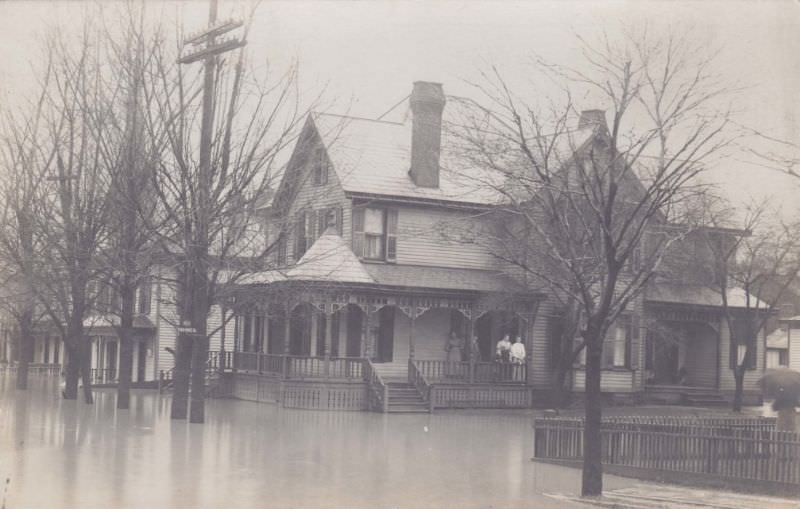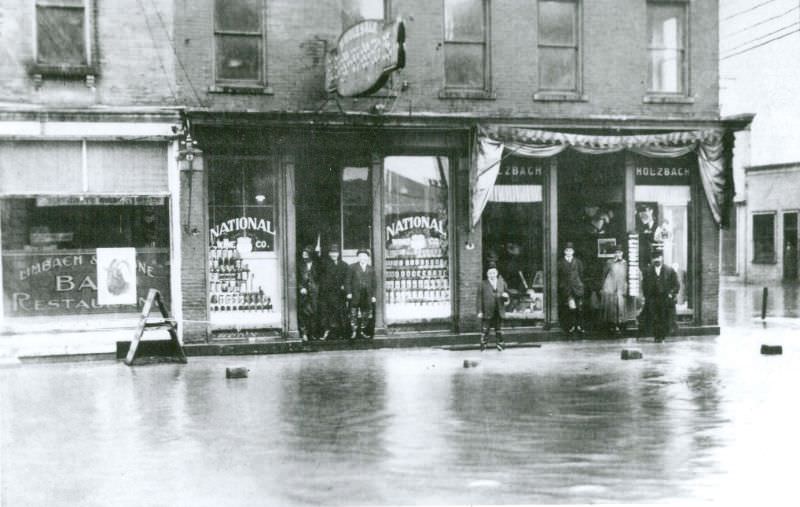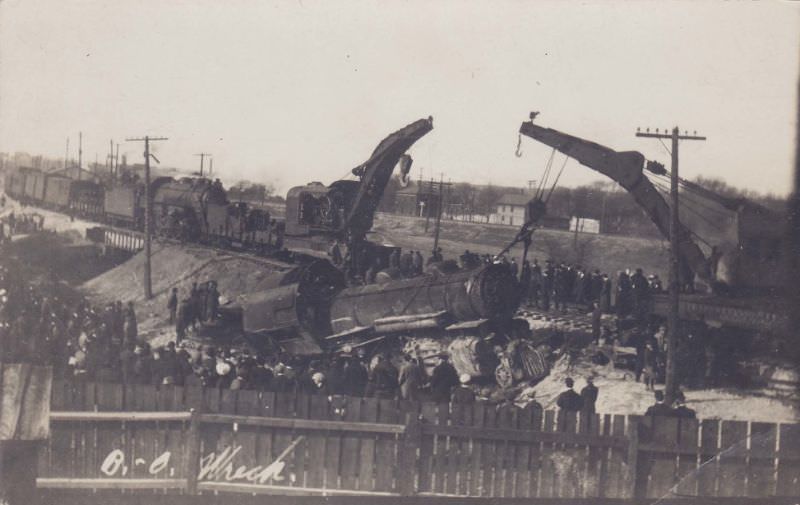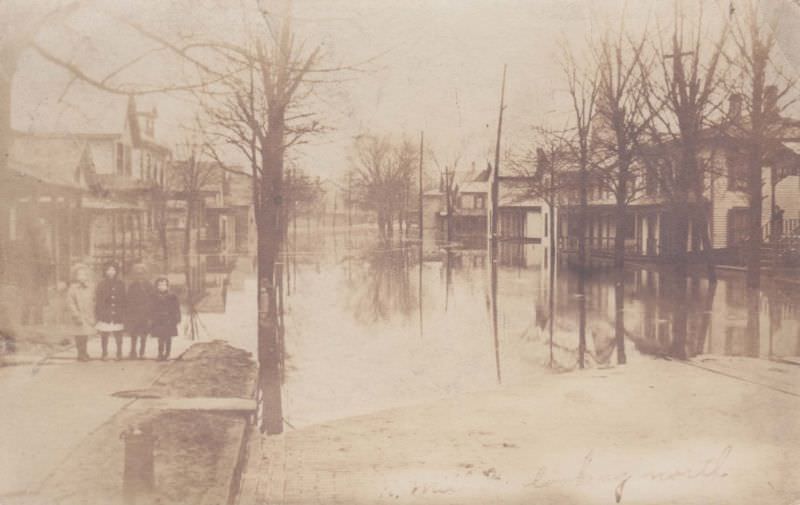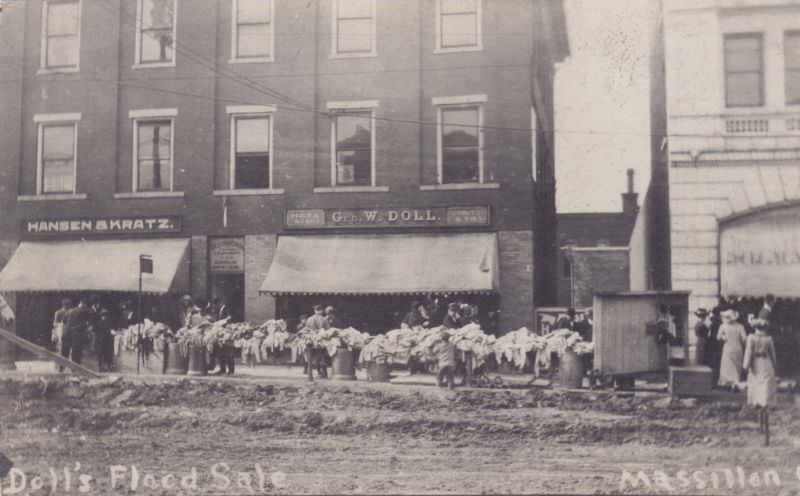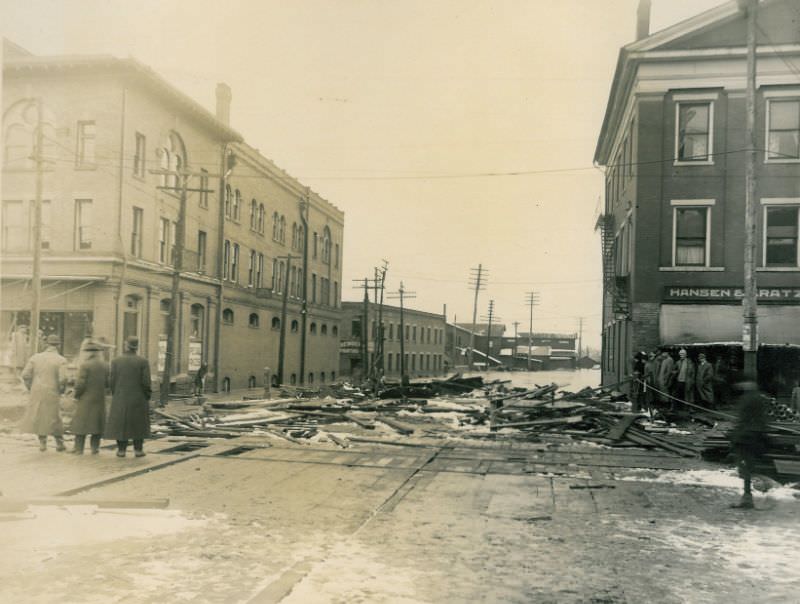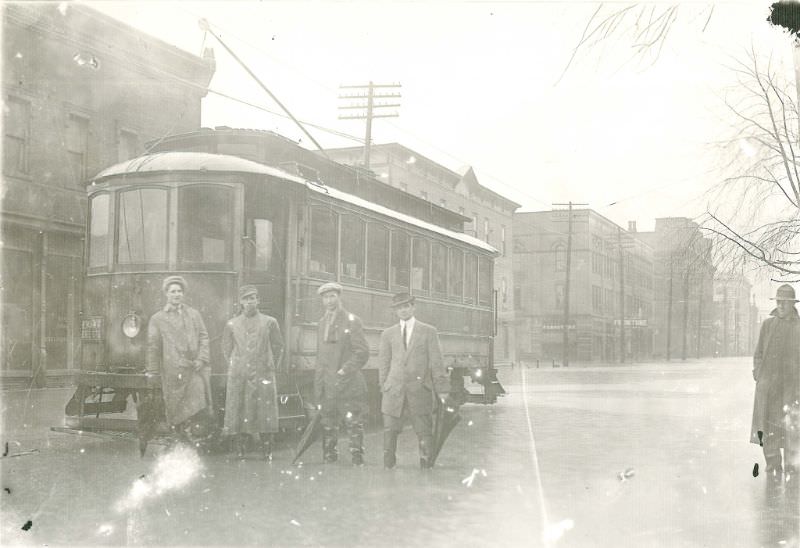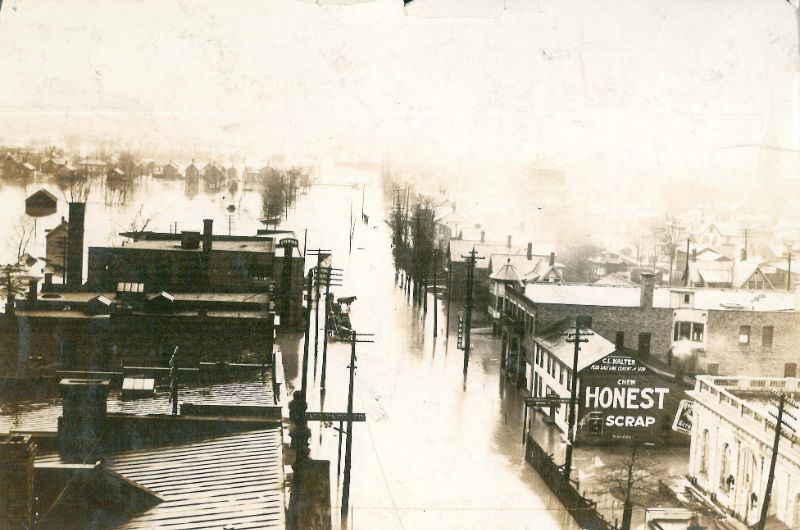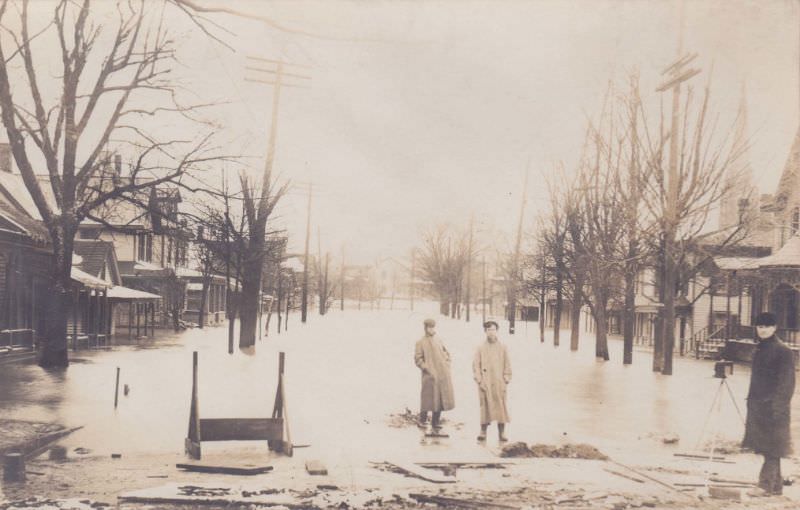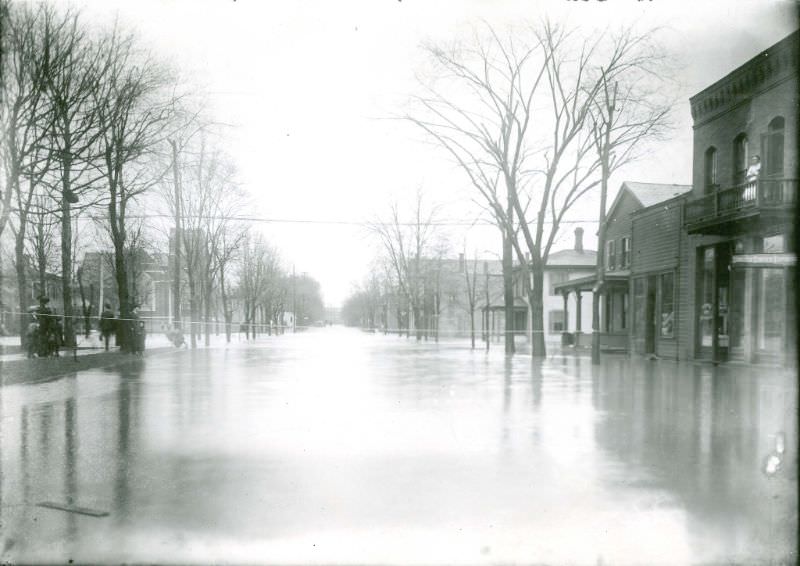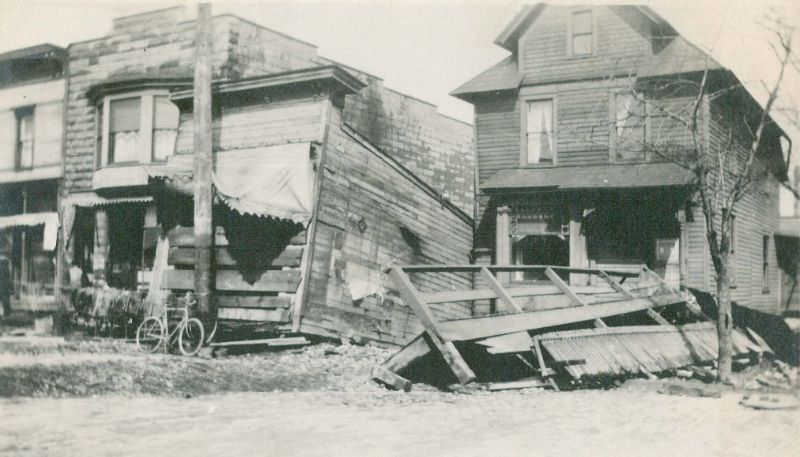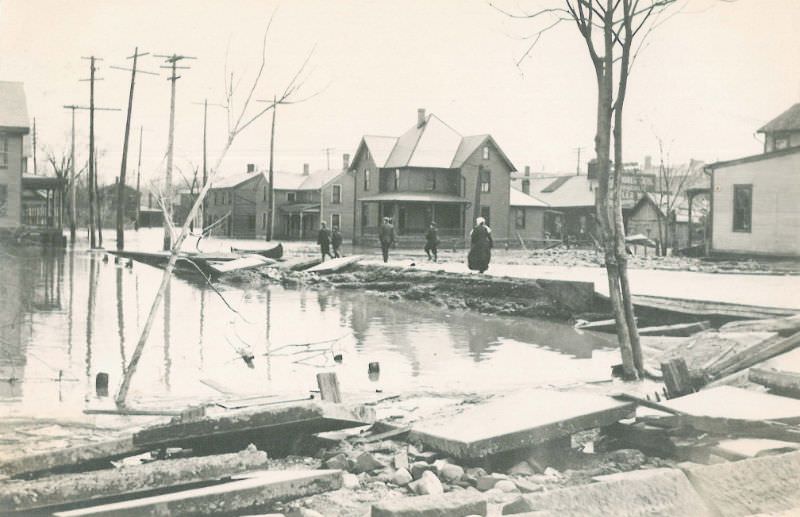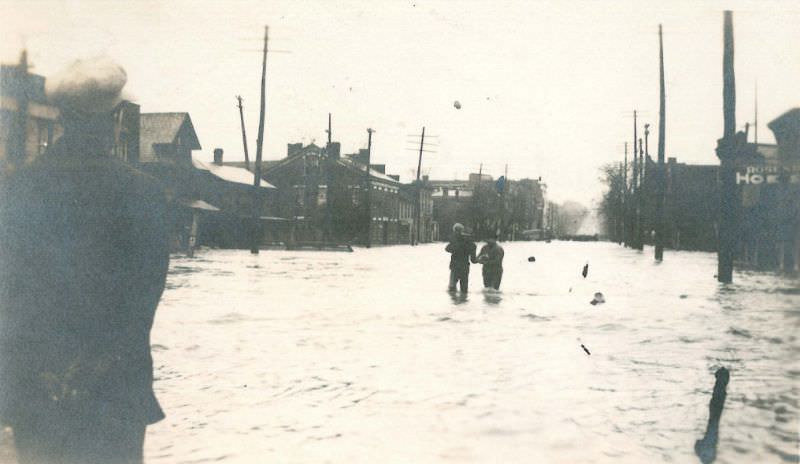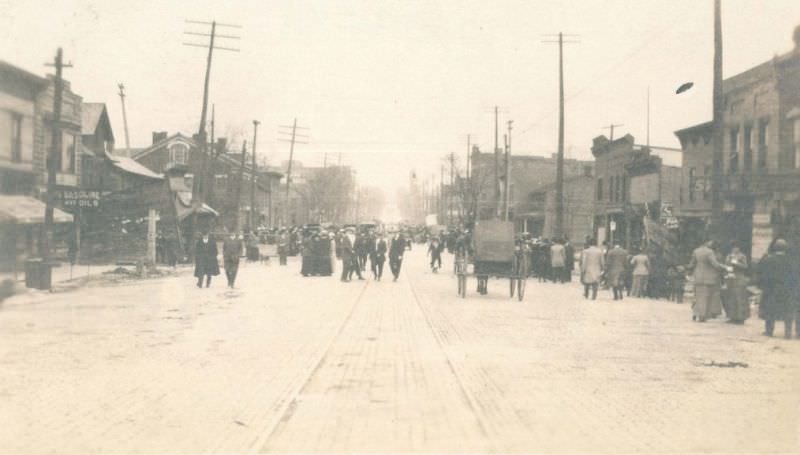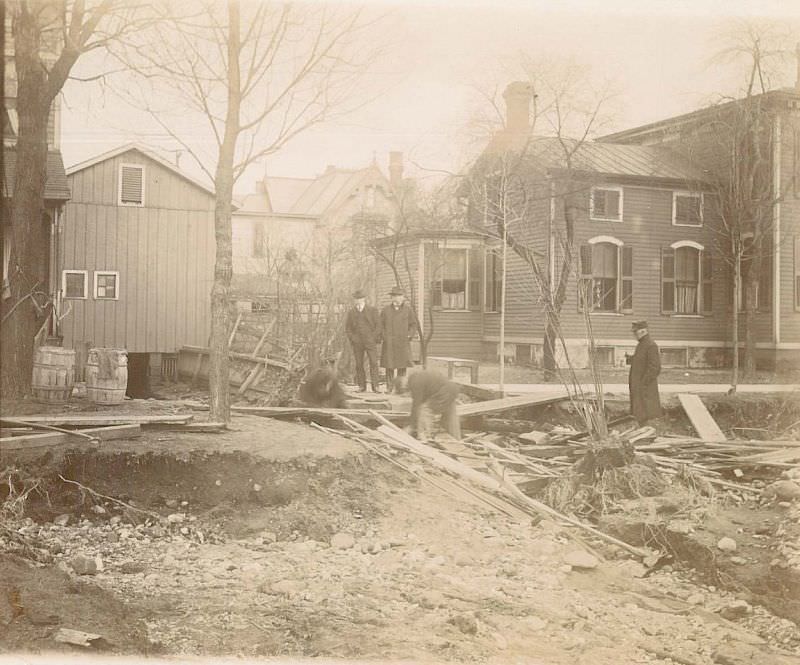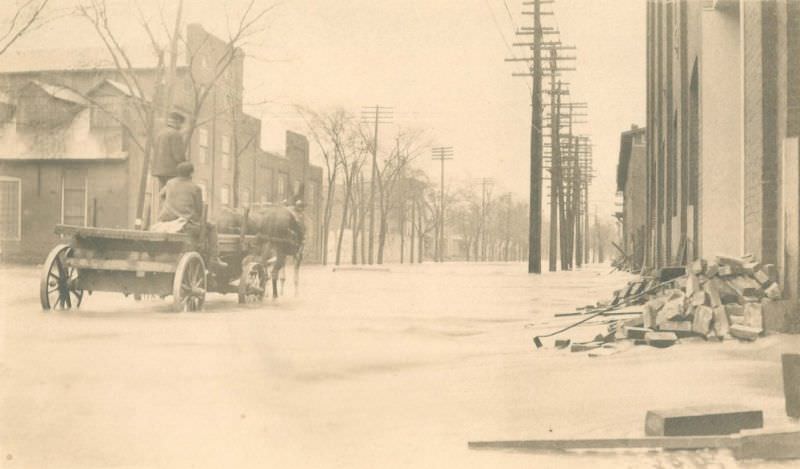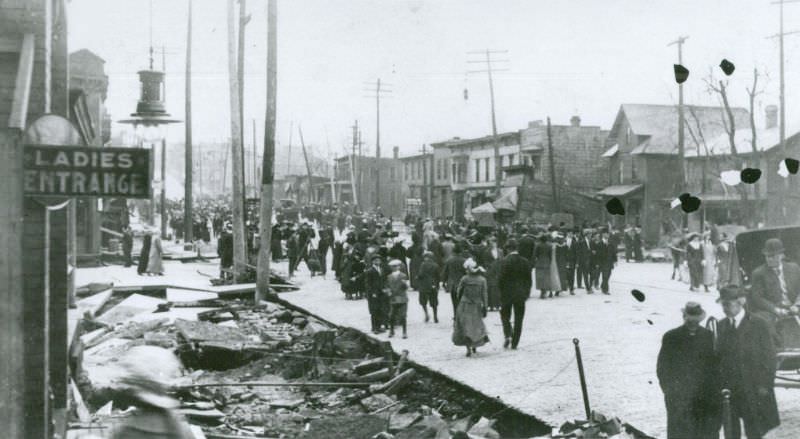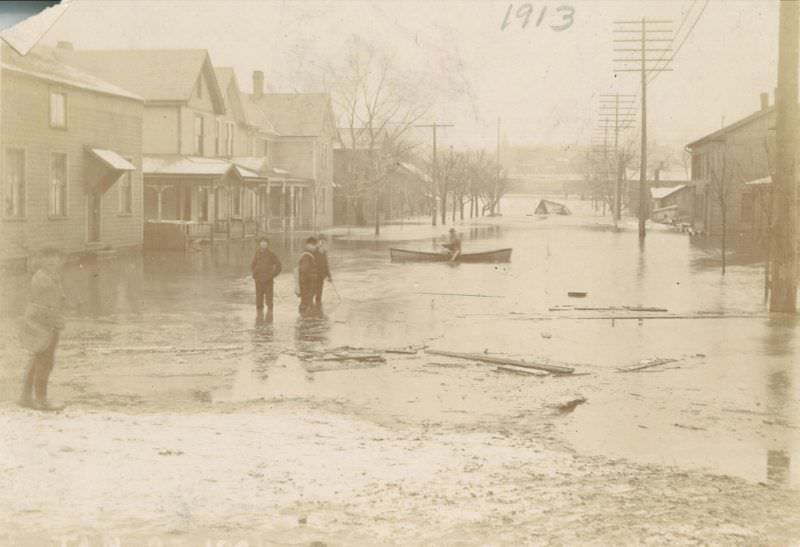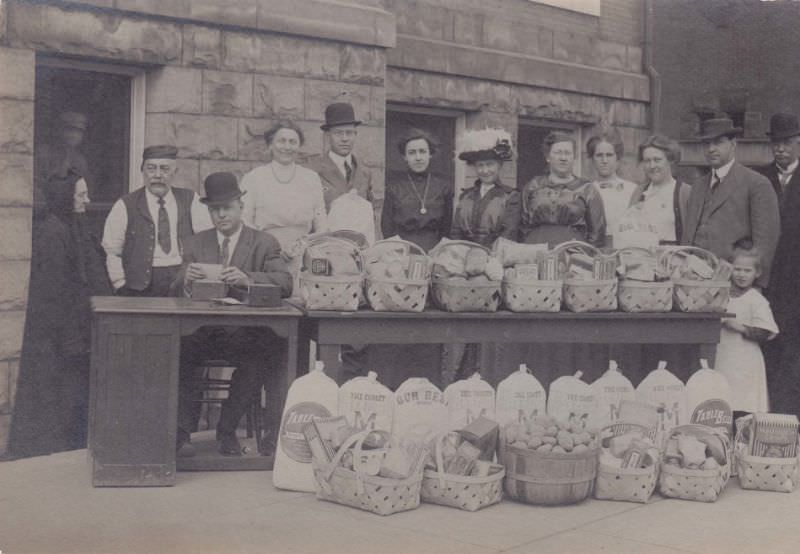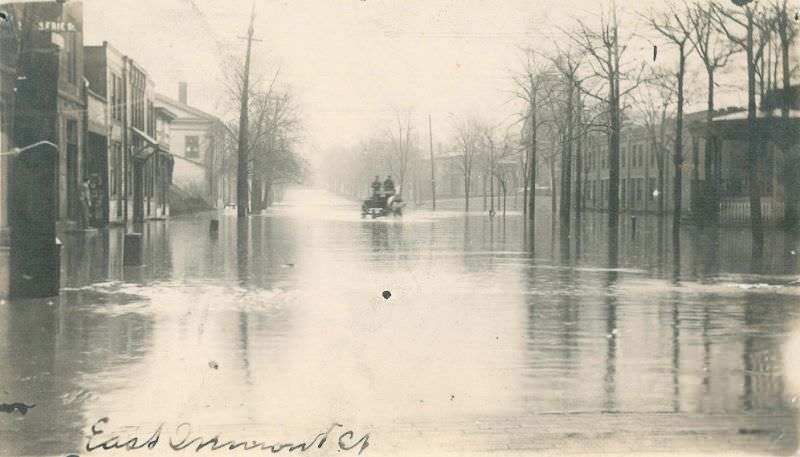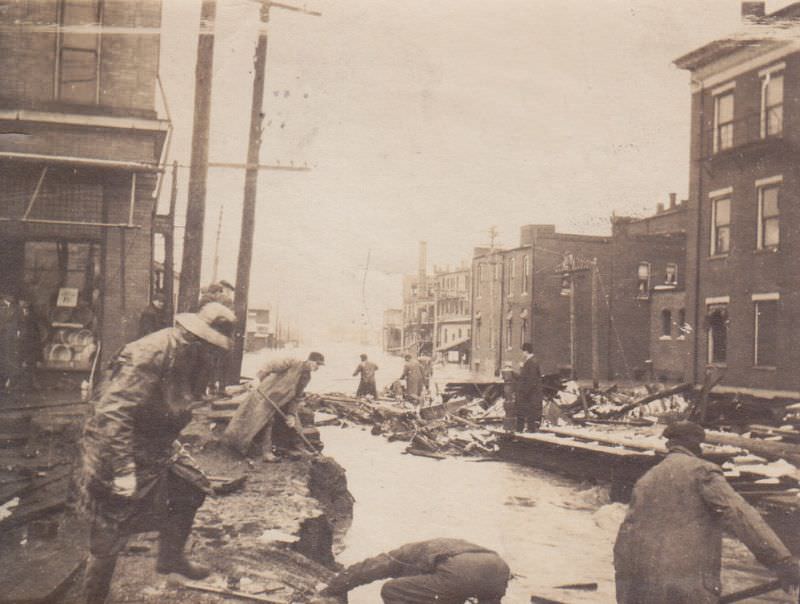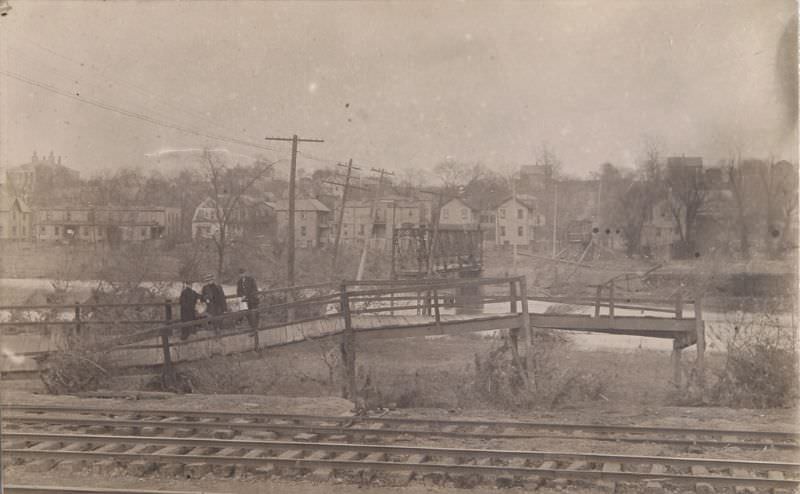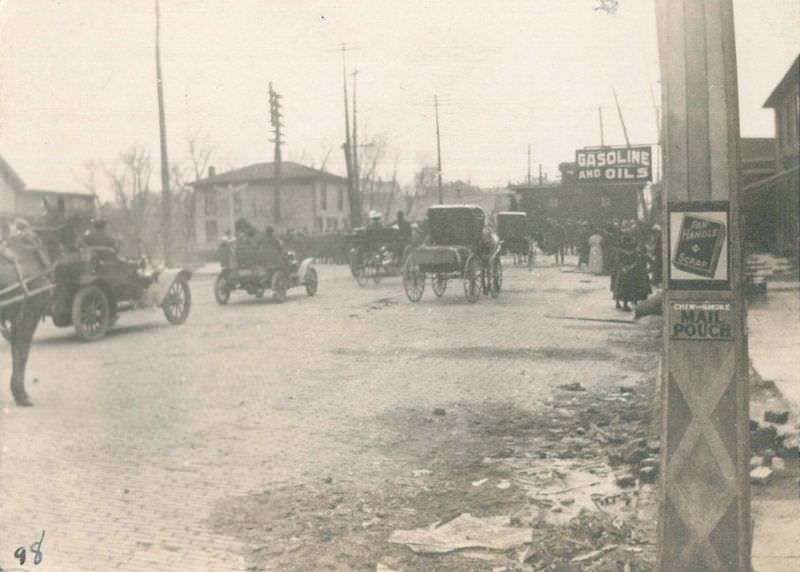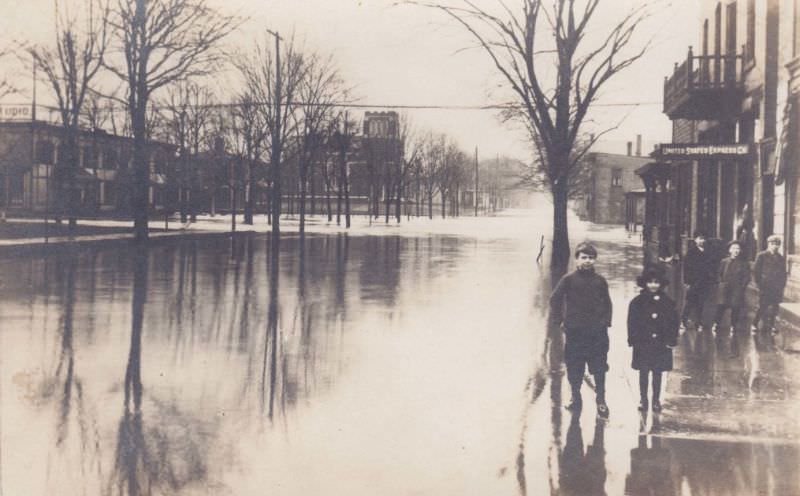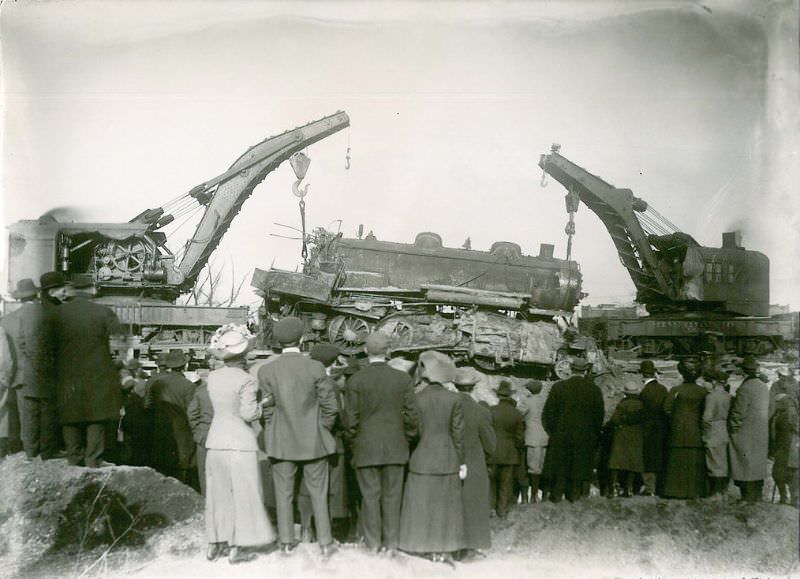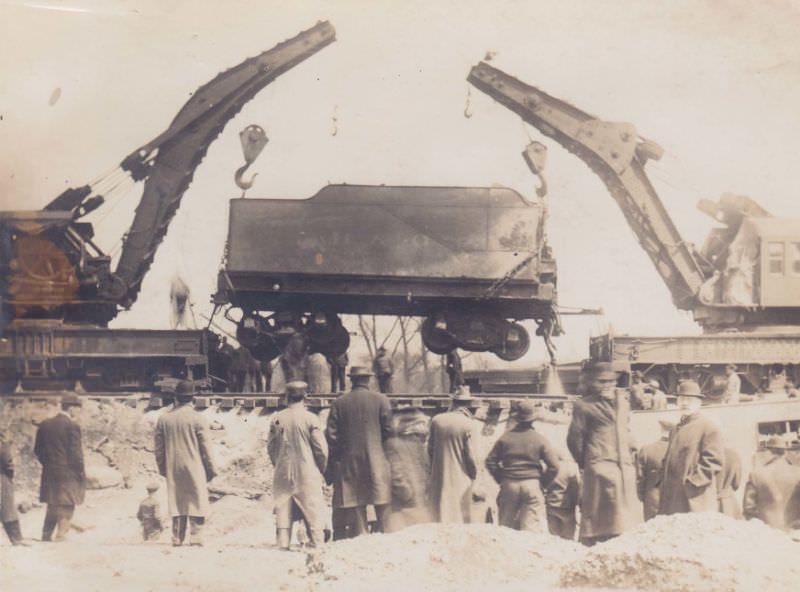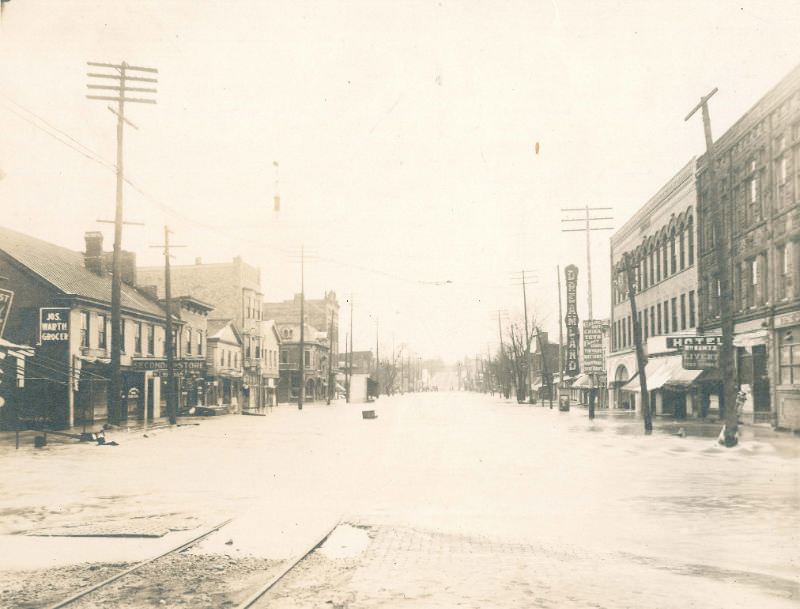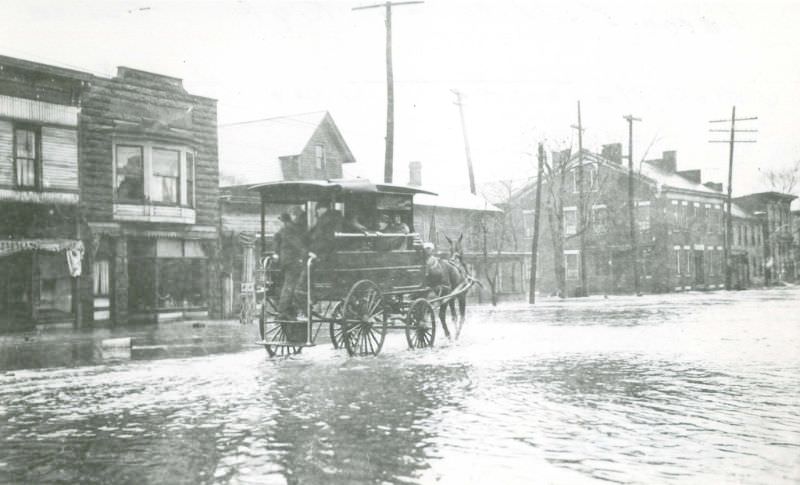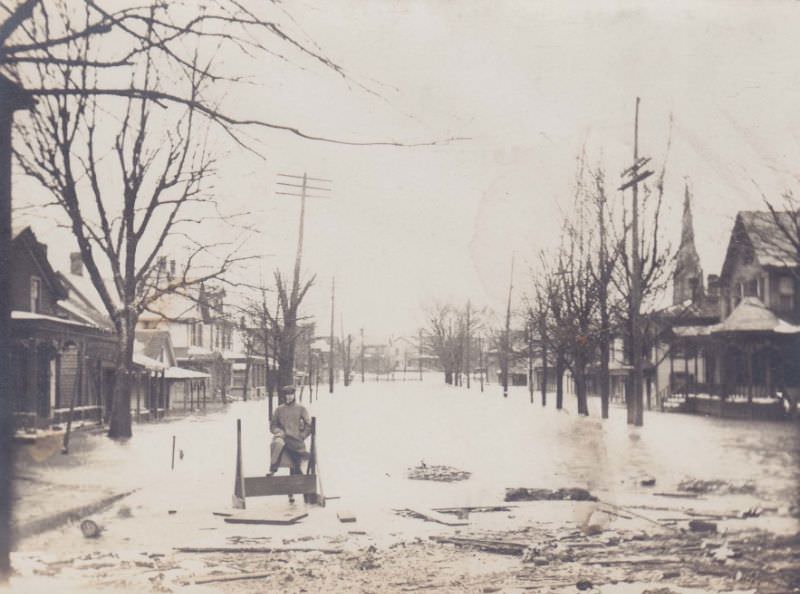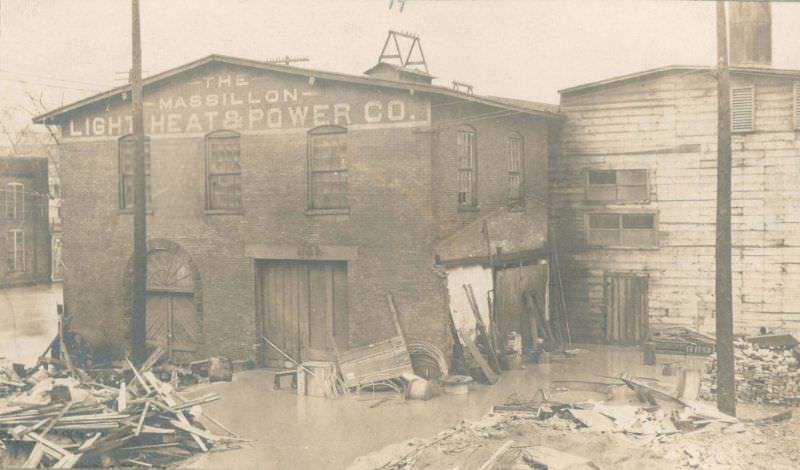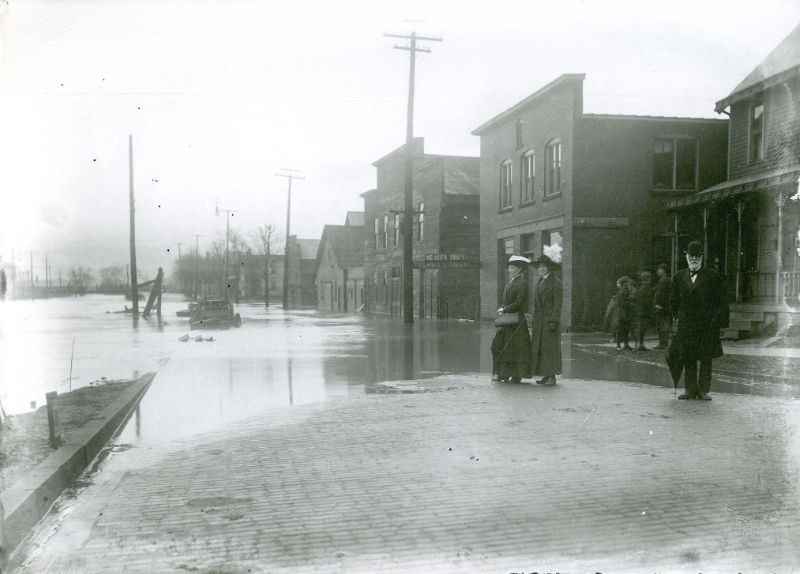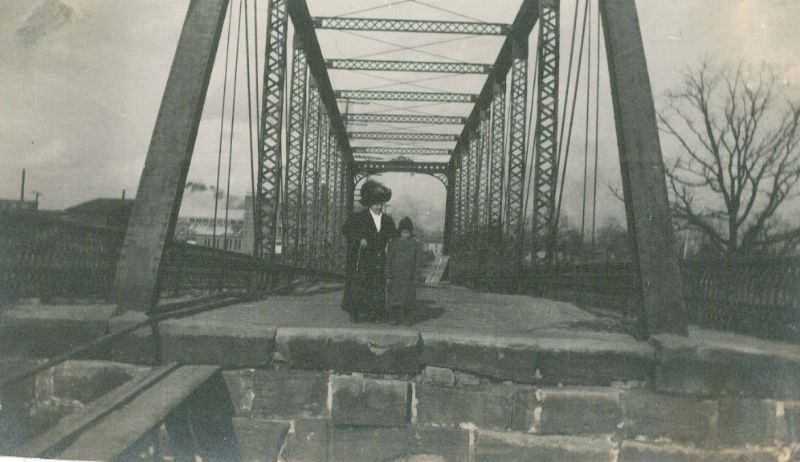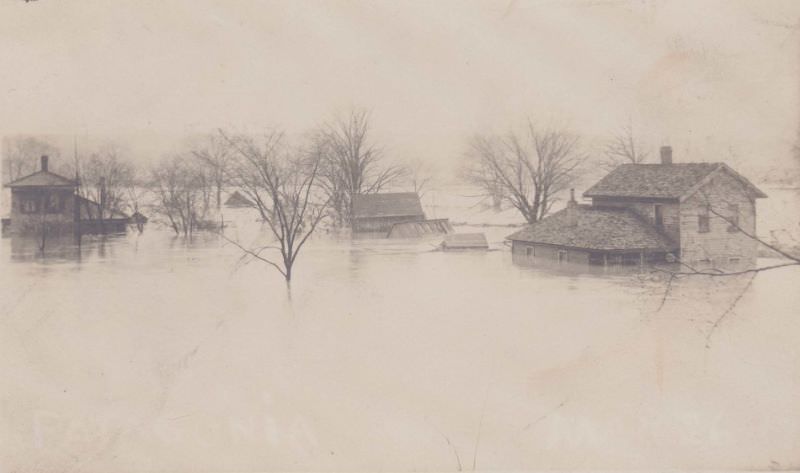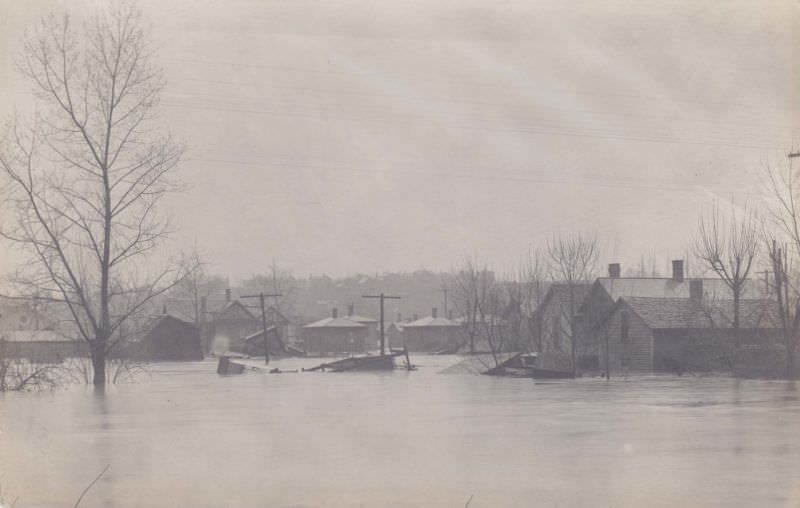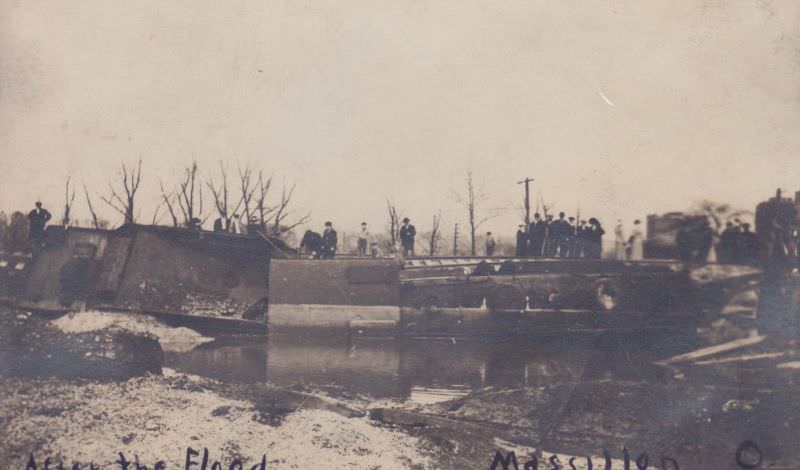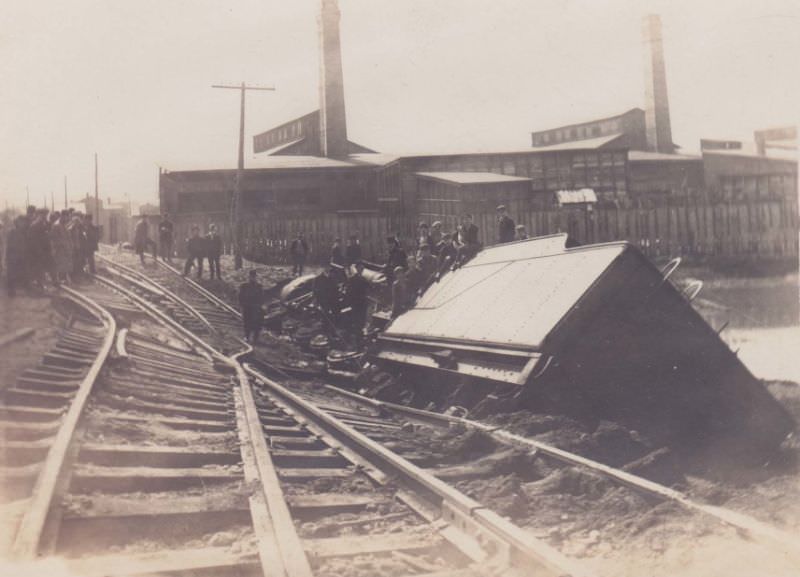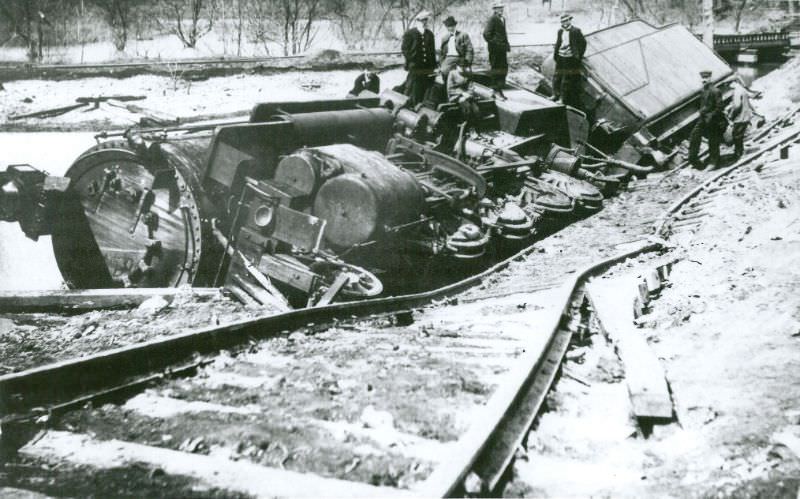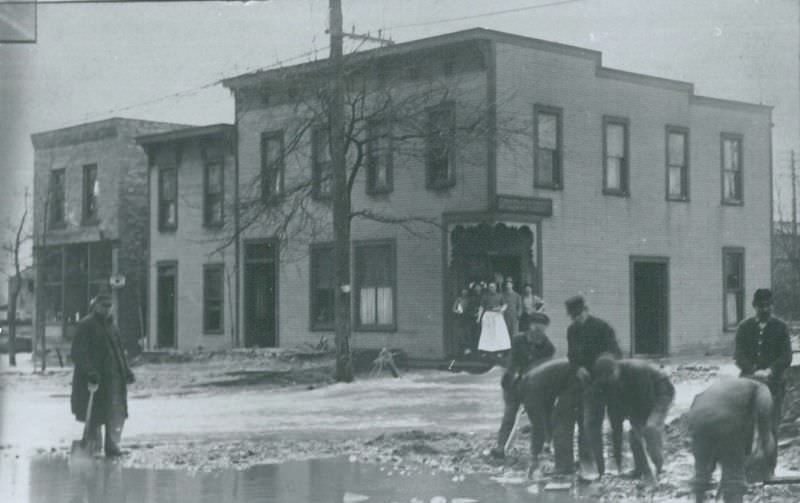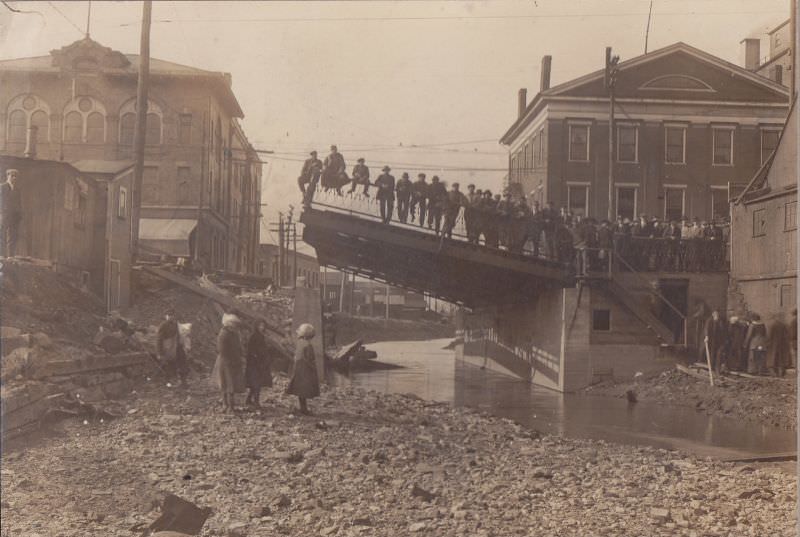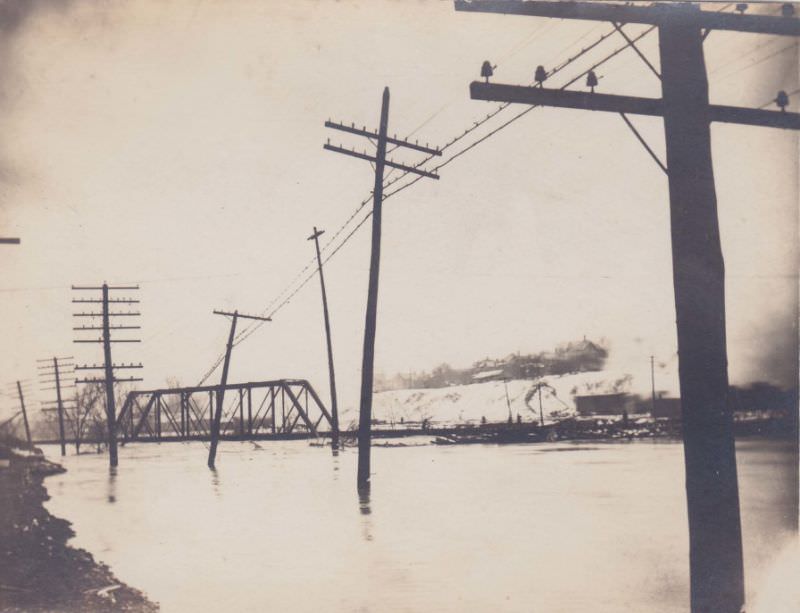The Great Flood of 1913 was a cataclysmic event that impacted numerous states in the Midwest, including Ohio; between March 23 and 27, 1913, a series of severe storms swept across the region, bringing torrential rains that led to widespread flooding. Massillon, a small Stark County, Ohio city, was among the most brutal hit.
As the waters of the Tuscarawas River and Sippo Creek rose rapidly, residents of Massillon faced a horrifying reality: their city was being swallowed by floodwaters. Homes and businesses were submerged, bridges washed away, and communication lines severed. The raging waters wreaked havoc on the city’s infrastructure, causing extensive damage and claiming numerous lives.
Casualties
While the exact number of fatalities in Massillon is challenging to determine, it is estimated that the overall death toll from the Great Flood of 1913 in Ohio was around 470 people. Many of those who perished were trapped in their homes, unable to escape the rapidly rising waters. Massillon’s tragic loss of life was a grim reminder of the power of nature and the vulnerability of even the most well-prepared communities.
Damage to architecture
The flood caused extensive damage to Massillon’s infrastructure, leaving much of the city in ruins. Homes, businesses, and public buildings were inundated, with many structures collapsing or swept away by the raging waters. The city’s bridges were also severely affected, with some being destroyed. The cost of the damage was staggering, estimated to be around $1.5 million (equivalent to over $38 million today).
Despite the widespread devastation, the people of Massillon showed incredible resilience in the face of disaster. The community banded together as the waters began to recede to rebuild their beloved city. Neighbors helped neighbors, businesses lent a hand to one another, and the city’s leaders worked tirelessly to restore normalcy.
The recovery efforts in Massillon were nothing short of remarkable. As the city rebuilt, engineers designed new infrastructure to help mitigate the effects of future floods. The construction of levees and flood walls and improved drainage systems ensured that Massillon would be better prepared for the next deluge.


